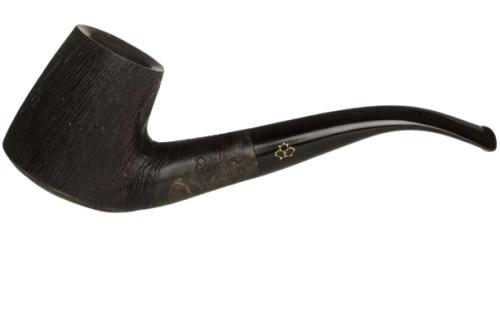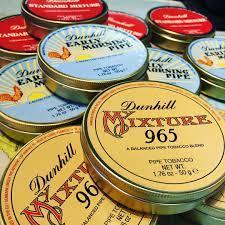The Timeless Tradition and Craftsmanship of Tobacco Smoking Pipes

Tobacco smoking pipes have a rich history that stretches back thousands of years, transcending cultures and civilizations. From the Native American peace pipe to the sophisticated briar pipes of Europe, the smoking pipe has been a symbol of relaxation, contemplation, and social bonding. In this article, we explore the different types of tobacco pipes, their historical significance, and the culture that surrounds them.
A Brief History
The use of pipes for smoking tobacco dates back to the ancient Americas. Indigenous peoples used pipes in sacred rituals, often involving the smoking of various herbs. When Europeans arrived in the New World, they encountered tobacco and the pipes used to smoke it. Tobacco quickly became a global commodity, and the pipe was its primary vehicle.
By the 17th century, pipe smoking had become widespread in Europe. Clay pipes were common, but they were fragile and often broke. In the 19th century, the briar pipe emerged as a more durable and aesthetically pleasing alternative. Made from the root burl of the Mediterranean heath tree, briar pipes became the gold standard for tobacco smoking.
Types of Tobacco Smoking Pipes
There are several types of smoking pipes, each with its unique characteristics:
Briar Pipes: As mentioned, briar pipes are made from the root burl of the Mediterranean heath tree. They are prized for their durability and ability to absorb moisture, making for a cooler, drier smoke. Briar pipes come in a variety of shapes and sizes, from the classic straight billiard to the elegant bent bulldog.
Meerschaum Pipes: Meerschaum is a soft, white mineral that is often carved into intricate designs. Meerschaum pipes are lightweight and cool to the touch. They provide a smooth smoke and develop a rich patina over time, adding to their beauty.
Clay Pipes: These were popular in the 17th and 18th centuries. Clay pipes offer a pure smoking experience but are very fragile. They are often used today for historical reenactments and by collectors.
Corncob Pipes: Made from the cob of a corn plant, Tobacco smoking pipes are inexpensive and provide surprisingly good smoke. Corncob pipes are often associated with American folk culture and are a favorite among beginners.
Calabash Pipes: These are made from the gourd of the calabash plant, often with a meerschaum bowl insert. Calabash pipes are instantly recognizable by their large, curved shape and are popular in traditional African smoking cultures.
The Culture of Pipe Smoking
Pipe smoking is more than just a method of consuming tobacco; it is a cultural practice steeped in tradition and ritual. For many, the act of packing, lighting, and smoking a pipe is a meditative process. It requires patience and skill, and the rewards are a deep sense of relaxation and contemplation.
In the Western world, pipe smoking enjoyed a golden age in the early 20th century. It was associated with intellectualism and sophistication, often depicted in literature and film. Famous pipe smokers include writers like J.R.R. Tolkien and Albert Einstein, who found solace and inspiration in their pipes.
Pipe clubs and gatherings are a testament to the communal aspect of pipe smoking. Enthusiasts come together to share their collections, swap tobacco blends, and discuss the finer points of pipe maintenance and smoking techniques. These communities are often close-knit, united by a shared passion for the art of pipe smoking.
Choosing and Caring for Your Pipe
Selecting the right Tobacco smoking pipe is a personal journey. Consider the material, shape, and size that best fits your smoking style. For beginners, a corn cob pipe is an excellent and affordable starting point. As you become more experienced, you might invest in a quality briar or meerschaum pipe.
Proper care and maintenance are crucial for a good smoking experience. Here are some tips:
Cleaning: Regularly clean your pipe with pipe cleaners and a pipe tool to remove residue and prevent buildup. After each smoke, run a pipe cleaner through the stem and shank.
Resting: Give your pipe time to rest between smokes. This helps prevent overheating and allows the wood to dry out, preserving the pipe’s longevity.
Storage: Store your pipes in a cool, dry place. Avoid exposing them to extreme temperatures or humidity, which can damage the wood or cause cracks.
Rotation: If you have multiple pipes, rotate them to ensure each one has adequate time to rest and dry out. This extends the life of your pipes and improves the smoking experience.
Conclusion
Tobacco smoking pipes offer a timeless and sophisticated way to enjoy tobacco. From the intricate carvings of meerschaum pipes to the rugged simplicity of corncob pipes, each pipe tells a story and provides a unique smoking experience. The culture of pipe smoking, with its emphasis on relaxation, contemplation, and community, continues to thrive. Whether you are a seasoned pipe smoker or a curious newcomer, the world of tobacco smoking pipes has something to offer. Enjoy the journey and savor the art of pipe smoking.






Comments